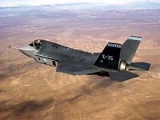India's Continuing Search for 'Strategic Autonomy'
18 May 2011
By Harsh V Pant for ISN
Finally, the Indian government seems to have achieved some success in convincing its domestic detractors that it is indeed 'non-aligned' and that its foreign policy is not being crafted in Washington. Nothing works better in New Delhi than a put-down to the US - and what a snub this has been: India last month rejected bids by Lockheed Martin and Boeing for a $10 billion-plus contract for 126 medium multi-role combat aircrafts (MMRCA), despite extensive lobbying by the US military-industrial complex, supported by President Barack Obama himself.
Instead, New Delhi has short-listed Dassault Aviation's Rafale and the Eurofighter Consortium's Typhoon. There were extensive field trials, and technical considerations ostensibly drove the final decision. But the dismay in Washington is widespread and to some extent understandable given the investment that the US has made in cultivating India in recent years. As if to underscore the importance of this development, the US Ambassador to India, Timothy Roemer, also decided to announce his resignation at the same time that the decision on MMRCA was being made public, though he has insisted that his resignation is related to "personal, professional and family considerations."
At one level, the seeming transparency of the process should indeed be heartening to those who have been puzzled by India's inability to get its defense modernization program on track for some time now. For a usually lackadaisical Indian Ministry of Defense (MoD) this is a welcome change. After years of returning unspent money, the MoD last year not only managed to spend its entire budget but also asked for money to spend on capital procurement. And now with movement on MMRCA bids, it is clear that the ministry wants to move swiftly on new defense procurement, relegating its ultra-cautious approach to the sidelines.
Masterstroke or misstep?
But major defense purchases are a means to an end, not an end in themselves. At a time when the political dispensation in New Delhi is embroiled in a whole host of corruption scandals, it has used this decision to insulate itself from charges of favoritism towards America. In a way it's a masterstroke. To its domestic policy critics, the government has signaled that despite all the heft of the US military-industrial complex, India refused to budge. To its foreign policy critics, there was a signal that New Delhi remains in thrall to no one, not even the US. The present government has been viewed as being too cozy with the US and there were signs of discontent within the ruling Congress Party itself on this score. Some of the recent revelations by WikiLeaks about the pressure on New Delhi during the negotiations over the US-India civilian nuclear energy pact had put the government in a difficult position. The decision on MMRCA allows the government to make a case that it is its own master.
The danger is that in the process New Delhi may have dealt a severe blow to its burgeoning ties with the US. Despite Obama's visit to New Delhi in November 2010, during which he endorsed India's candidacy to the United Nations Security Council, there is a growing sense in New Delhi and Washington that bilateral ties are drifting. Both governments have other priorities. The Obama administration is too consumed with its domestic economic troubles and the Indian government has been battling charges of incompetence and corruption at a number of levels. New Delhi has also made some overtures to other power centers in recent months. At the UN, India scuttled attempts by western powers to strongly condemn the Syrian government for its attacks on protestors, merely asking the Security Council to urge all sides to abjure violence and seek a peaceful resolution. And before this there was India's abstention on Libya at the Security Council, as well as the much touted BRICS summit in China last month, at which the joint statement underscored the need for a realignment of the post-World War II global order that was based on the untrammeled supremacy of the US.
The decision on MMRCA will only reinforce the perception in Washington that the much-touted strategic partnership between the US and India is more hype than substance. But one defense deal doesn't a relationship make. In fact, India has already cleared the decks for its biggest ever defense agreement with the US: the $4.1 billion contract for 10 C-17 Globemaster-III giant strategic airlift aircraft. India will also be inducting six C-130J "Super Hercules" tactical airlift aircrafts this year under a $1.2 billion contract, as well as 12 long-range maritime patrol aircraft P-8I Poseidon from early-2013 onwards, costing upwards of $3 billion.
Aside from defense, India shares a wide-ranging set of interests with the US, the most significant of which is to confront a rising China. At a time when China's rapid rise is upending the extant balance of power in the Asia-Pacific, both Washington and New Delhi need each other. The US faces the prospect of an emerging power transition in Asia, and it needs new partners to provide strategic stability to a region where the center of gravity of global politics and economics is rapidly moving. India, for its part, is trying to come to grips with an ever-more assertive China in its vicinity and needs US support if it is to protect and enhance its vital national interests. It would indeed be a pity if a defense deal ends up becoming a benchmark in defining the future trajectory of this very important bilateral relationship.

